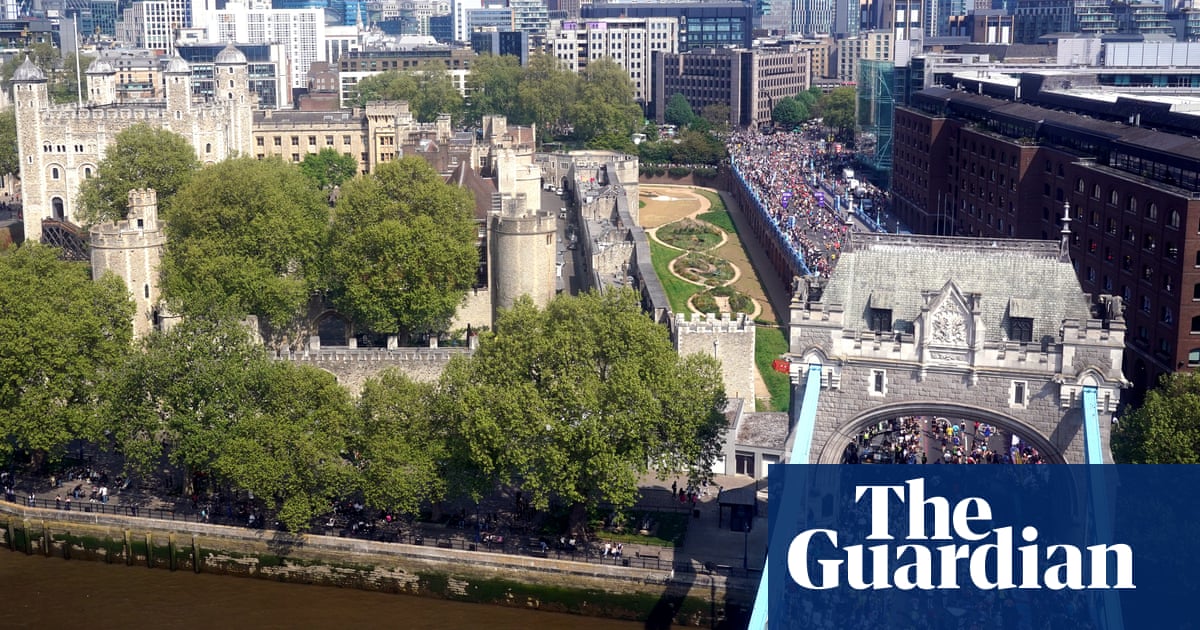The London Marathon’s organisers have hailed an “extraordinary” day in the nation’s capital, as the 45th edition beat the world record for number of finishers and attracted record crowds.
By 6.30pm on Sunday evening, the number of finishers had surpassed the previous best of 55,646 for a mass participation race set in New York.
Meanwhile, race director Hugh Brasher said that about 800,000 people had cheered them on – approximately 60,000 more than usual – due to the warm weather and higher number of participants.
“It’s been an extraordinary day of records,” said Brasher. “But, more importantly, an extraordinary day of people coming together and supporting each other in this quest that outwardly is about running 26.2 miles, but actually is much more about celebrating humanity.”
“The spectator data takes time to crunch,” he added. “But we believe there were 60,000 more people watching, which is the size of a massive football match. I’d be absolutely gobsmacked if it wasn’t a record crowd.”
Those running includedSergio Aguiar and David Stancombe, who were raising money for projects set up in their daughters’ memory after they were murdered in the Southport attack. Both finished in just over four hours; however, Aguair collapsed to the ground shortly after crossing the line.
In a video message, played to the families before the race, Keir Starmer paid tribute to the two men, who lost their daughters Alice Aguiar, nine, Elsie Dot Stancombe, seven, while they attended a Taylor Swift-themed dance workshop in July.
“This is an incredible way to honour the memory of your precious daughters and the entire nation is in awe of your courage and your resilience,” the UK prime minister said.
The finishers also includedLindsay Burrow, the wife of rugby league great Rob Burrow, who died in June 2024 after being diagnosed with motor neurone disease in 2019. Burrow, who said that running had given her a “focus and purpose”, finished the race in just under five hours.
Thewomen’s race was won by the Ethiopian Tigist Assefa, who set a new women’s-only world record of 2:15.50. However, that record, which applies to races without a male pacemaker, was six minutes behind the official women’s record, set last year.
Eilish McColgan was the leading British woman home, coming eighth in her first marathon in a time of 2:24.25 – although it was several minutes slower than she had hoped after the warmer than expected weather.
“I was just determined to put one foot in front of the other,” she said. “I think if you look at a lot of British athletes, everyone was a little bit off where they wanted. Maybe it did have a bit more of an impact than we thought.”
Meanwhile in the men’s race,won by the Kenyan Sabastian Sawe, there was a creditable performance by Britain’s Olympic triathlon gold medallist Alex Yee.
Yee, who was running in his first marathon, finished in 2:11.8, and afterwards paid tribute to the crowds. “That was seriously tough but probably one of the best moments of my life,” he said. “I expected the crowds to be good but that was a whole other level.
“I am just immensely proud to have run the London Marathon,” he added. “Obviously, in the second half I faded quite a lot. But I am so proud to be part of such an amazing day.”
The Guinness World Records team were also kept busy, with dozens of unusual records being set – including by Chris “Rhino Boy” Green, who broke one for the most marathons run in a 3D costume.
“You could not find a happier rhino right now,” said Green after completing his 113rd marathon as a rhino and raising money for the Save the Rhino charity.
As the day came to an end, Brasher said that the celebration and joy he had seen once again painted London in its best light.
“Three-quarters of the people out there are running for a charity – and everyone has a reason to run,” he said. “People have asked: ‘Why are you trying to break the world record for finishers?’ But it’s not about that.
“What we’re trying to do is give as many people as we can the opportunity to experience something that is life affirming, that is community building, that is good for their physical and mental health, and truly will give them an experience like no other.”
And, once again, the London Marathon duly delivered.
